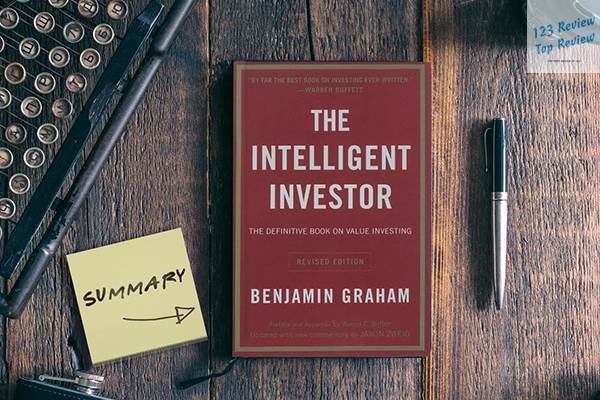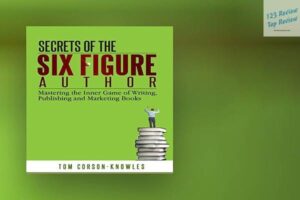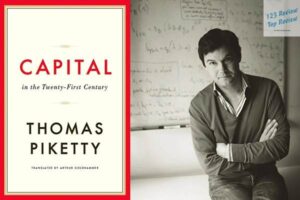“The Intelligent Investor book” has remained a timeless resource for investors, both novice and seasoned, who seek to navigate the complex world of stock markets with a disciplined, value-oriented approach. Graham, often hailed as the “father of value investing,” imparts wisdom that transcends generations, offering strategies and principles that are as relevant today as they were over seven decades ago.
In this article, 123 Review delves deeply into the key principles, investment strategies, market behavior, and other essential topics covered in “The Intelligent Investor.” By exploring these elements in detail, we aim to equip you with the knowledge needed to make informed, rational investment decisions that align with your long-term financial goals.
Key Principles of Value Investing
Distinguishing Investing from Speculation
One of the foundational concepts in “The Intelligent Investor” is the clear distinction between investing and speculation. Graham underscores that true investing is an act of thorough analysis, careful risk management, and a pursuit of reasonable returns over time. In contrast, speculation involves betting on market movements without adequate understanding or concern for underlying values.

Investing, according to Graham, is a disciplined process where the investor seeks to acquire assets that are undervalued by the market but possess intrinsic worth that justifies their purchase. This approach requires patience, knowledge, and a commitment to long-term objectives. Speculation, however, is often driven by emotion, market trends, and the hope of quick profits, which can lead to significant financial losses.
Importance of Margin of Safety
The concept of the “margin of safety” is perhaps the most critical lesson in “The Intelligent Investor.” Graham advocates for purchasing securities at a price that is significantly lower than their intrinsic value. This gap between the purchase price and the intrinsic value provides a cushion against errors in judgment or unforeseen market downturns, thereby reducing the risk of loss.
The margin of safety is not just about avoiding losses; it’s also about maximizing potential gains. By investing in undervalued assets, the investor positions themselves to benefit when the market eventually recognizes and corrects the mispricing. This principle is especially important in volatile markets, where prices can fluctuate wildly based on short-term factors rather than fundamental values.
Intrinsic Value Assessment
Determining the intrinsic value of a security is at the heart of value investing. Graham teaches that intrinsic value is the true worth of an investment, based on factors such as a company’s earnings, dividends, assets, and overall financial health. Unlike market prices, which can be influenced by sentiment and speculation, intrinsic value is rooted in objective analysis.
Graham’s method for assessing intrinsic value involves a detailed examination of a company’s financial statements, management practices, competitive position, and future growth prospects. By focusing on these factors, investors can identify opportunities where the market price of a security does not reflect its true value. Buying at these undervalued prices allows for substantial upside potential when the market corrects itself.
Investment Strategies
Defensive Investor Strategy
In “The Intelligent Investor,” Graham categorizes investors into two groups: defensive and enterprising. The defensive investor, also known as the passive investor, seeks a strategy that minimizes risk and requires less active management. This approach is ideal for individuals who prefer stability and are not interested in dedicating significant time to managing their investments.
The defensive strategy emphasizes diversification across a broad range of blue-chip stocks and bonds. These investments are typically in well-established companies with a history of steady earnings, strong balance sheets, and consistent dividend payments. The goal is to build a portfolio that is resilient to market fluctuations and capable of generating stable returns over the long term. Graham advises defensive investors to avoid speculative investments and to focus on preserving capital.
Enterprising Investor Strategy
For those willing to dedicate more time and effort to their investments, Graham offers the enterprising investor strategy. This approach is more aggressive and involves actively seeking out opportunities for higher returns. The enterprising investor is not content with average market returns; instead, they pursue undervalued stocks, special situations, and other investment opportunities that require more in-depth analysis and monitoring.
The enterprising investor strategy includes several key elements:
- Stock Selection: Identifying and investing in undervalued stocks that have strong fundamentals and growth potential.
- Special Situations: Capitalizing on opportunities such as mergers, acquisitions, or company restructurings that may lead to significant price appreciation.
- Flexibility in Asset Allocation: Adjusting the portfolio based on market conditions, economic indicators, and individual risk tolerance.
This strategy demands a deep understanding of financial markets, a keen eye for value, and the discipline to follow Graham’s principles rigorously. While it offers the potential for higher returns, it also comes with increased risk and requires more active management.
Asset Allocation Techniques
Asset allocation is a crucial aspect of both defensive and enterprising investment strategies. Graham emphasizes the importance of diversifying investments across different asset classes, such as stocks, bonds, and cash, to manage risk effectively. A well-balanced portfolio is less susceptible to the volatility of any single asset class.
Graham suggests that investors should adjust their asset allocation based on their individual risk tolerance and market conditions. For instance, during periods of market uncertainty or economic downturns, an investor might allocate a higher percentage of their portfolio to bonds, which are generally less volatile than stocks. Conversely, in a bullish market, a greater allocation to equities might be warranted to capture potential gains.
The key is to maintain flexibility and regularly review the portfolio to ensure it aligns with the investor’s goals and risk appetite. By doing so, investors can better navigate market fluctuations and achieve a more stable, long-term return on their investments.
Market Behavior and Investor Psychology
Understanding Mr. Market Concept
One of the most memorable concepts introduced by Graham is the allegory of “Mr. Market.” Mr. Market represents the stock market’s fluctuating nature, driven by emotion rather than rational analysis. Each day, Mr. Market offers investors prices for their shares, sometimes at a premium and other times at a discount, based solely on his changing mood.
Graham uses Mr. Market to illustrate the irrational behavior of the stock market, where prices often deviate from intrinsic value due to factors such as fear, greed, and herd mentality. He advises investors to view Mr. Market’s offers with skepticism, taking advantage of his irrationality by buying when prices are low and selling when they are high.
Understanding the Mr. Market concept helps investors maintain perspective during market swings. Instead of being swayed by daily price movements, they can focus on the underlying value of their investments, using market volatility to their advantage.
Emotional Discipline in Investing
Emotional discipline is a central theme in “The Intelligent Investor.” Graham repeatedly warns against making investment decisions based on emotions, such as fear during market downturns or greed during bull markets. These emotions often lead to impulsive actions, such as panic selling or buying at market peaks, which can result in significant financial losses.
Graham advocates for a rational, systematic approach to investing. He encourages investors to develop a well-thought-out strategy and stick to it, regardless of market conditions. This discipline helps investors avoid the common pitfalls of market timing and speculation, allowing them to focus on long-term wealth creation.
Psychological Barriers to Investment Success
Investing is not just a matter of numbers and analysis; it also involves overcoming psychological barriers. Common cognitive biases, such as overconfidence, loss aversion, and confirmation bias, can cloud judgment and lead to poor investment decisions.
Graham discusses these psychological barriers in detail, emphasizing the importance of self-awareness and discipline. By recognizing and mitigating these biases, investors can make more objective decisions that align with their long-term goals. For example, acknowledging the tendency to overestimate one’s ability to predict market movements can help an investor avoid overtrading, which often leads to suboptimal results.
Portfolio Management
Diversification Techniques
Diversification is a cornerstone of effective portfolio management, and Graham strongly advocates for it in “The Intelligent Investor.” The principle of diversification involves spreading investments across different asset classes, industries, and geographic regions to reduce risk. By not putting all their eggs in one basket, investors can protect themselves from the impact of a poor-performing asset on their overall portfolio.
Graham suggests that a well-diversified portfolio should include a mix of stocks, bonds, and other asset classes, such as real estate or commodities. Within the stock portion, diversification should extend to different sectors and industries, as well as companies of varying sizes and growth stages. This approach helps to smooth out returns over time, as the performance of different assets and sectors can offset each other.
Risk Management Practices
Risk management is an integral part of Graham’s investment philosophy. Beyond diversification, he emphasizes the importance of using a margin of safety, conducting thorough research, and regularly reviewing the portfolio to manage risk effectively.
Graham advises investors to be cautious and avoid taking unnecessary risks. This includes being wary of highly speculative investments, leveraging excessively, or making decisions based on market trends rather than sound analysis. By prioritizing capital preservation and focusing on long-term value, investors can manage risk and achieve more consistent returns.
Monitoring and Rebalancing Portfolios
Ongoing portfolio management involves regular monitoring and rebalancing. Graham highlights the importance of keeping a close eye on portfolio performance and making adjustments as needed to stay aligned with investment goals and risk tolerance.
Rebalancing is the process of realigning the portfolio’s asset allocation to its target levels. For example, if a stock portion has grown significantly due to market appreciation, the investor might sell some stocks and buy bonds to maintain the desired balance. This disciplined approach ensures that the portfolio does not become overly concentrated in any one asset class, reducing risk and enhancing long-term performance.
Stock Selection Criteria
Fundamental Analysis Approaches
Fundamental analysis is the bedrock of Graham’s stock selection process. This approach involves a deep dive into a company’s financial health, looking at factors such as earnings, revenue, profit margins, return on equity, and debt levels. By analyzing these financial metrics, investors can gauge the intrinsic value of a company and determine whether its stock is undervalued or overvalued by the market.
Graham’s emphasis on fundamental analysis encourages investors to focus on the long-term prospects of a company rather than short-term market fluctuations. This method requires a disciplined, patient approach, as it often takes time for the market to recognize and correct mispriced securities.
Evaluation of Financial Health
In “The Intelligent Investor,” Graham outlines specific criteria for evaluating a company’s financial health. These include:
- Earnings Stability: Consistent earnings over a period of at least ten years.
- Dividend Record: A history of uninterrupted dividend payments over many years.
- Debt-to-Equity Ratio: A conservative approach to leverage, with a preference for companies with low debt levels.
- Price-to-Earnings Ratio: A low P/E ratio relative to the company’s historical average and industry peers, indicating potential undervaluation.
- Price-to-Book Ratio: A low P/B ratio, suggesting that the stock is trading below its book value, which can be a sign of undervaluation.
By applying these criteria, investors can identify companies that are financially sound and trading at attractive prices, making them suitable candidates for a value-oriented portfolio.
Long-Term Investment Horizon
Graham advocates for a long-term investment horizon, emphasizing that true wealth is built over time. He advises investors to buy stocks with the intention of holding them for several years, allowing the intrinsic value to be realized and compounded.
This long-term approach aligns with the principles of value investing, where the focus is on underlying fundamentals rather than short-term market trends. By remaining patient and disciplined, investors can benefit from the power of compounding, as well as the market’s eventual recognition of a stock’s true value.
Conclusion
“The Intelligent Investor” by Benjamin Graham is more than just a book; it is a timeless guide that provides investors with the tools and mindset needed to succeed in the complex world of investing. From the importance of distinguishing between investing and speculation to the critical concept of the margin of safety, Graham’s principles are designed to help investors build and preserve wealth over the long term.
By adopting a disciplined, value-oriented approach, investors can navigate the ups and downs of the market with confidence, making informed decisions that align with their financial goals. Whether you are a defensive investor seeking stability or an enterprising investor pursuing higher returns, “The Intelligent Investor” offers valuable insights that can guide your investment journey for years to come.





